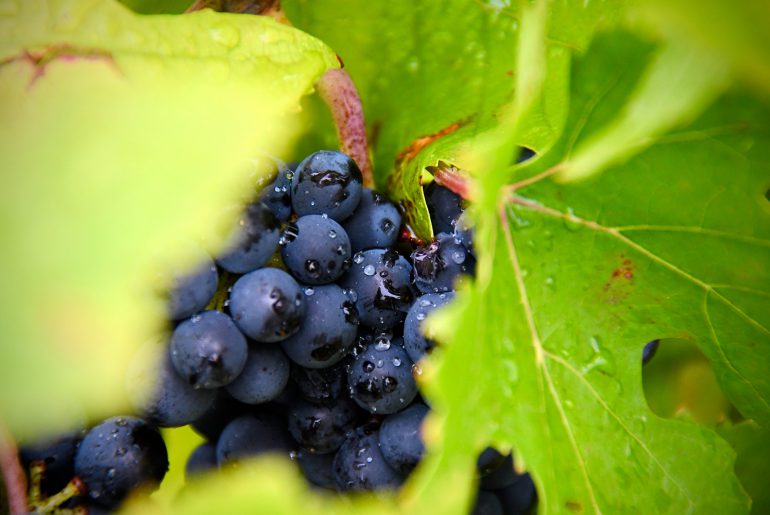Santorini is often called “the vineyard,” because wine-making is one of the main agricultural practices on the island – and the history of vinification here is as deeply-rooted in legend and tradition. Some say the Minoans had vineyards on Thira as far back as the 5th millennium BC.
The volcanic soil layers upon limestone under the scorching sun, exposed to dry winds and essentially deprived of water, as rainfall is scarce and there are no sources of underground water either. Farmers found a distinctive way to overcome these challenges. They cultivate grapes according to the kouloura method, training the vines to coil in a wreath on the ground to protect the fruit from the heat and against the dry winds. Kouloura is the most widespread system on the island, although wineries like Domaine Sigalas use more modern techniques too – growing Assyrtiko on a vertical structure.
Due to these extraordinary natural conditions, the indigenous grapes of Santorini have unique characteristics too.
Assyrtiko
Winemakers appreciate the indigenous grapes of Santorini, especially the Assyrtiko (pronounced ah-SEER-tee-koh) – the noblest of the whites – which makes up about 75% of the overall grape production on the island.
Assyrtiko is a spectacular fruit, known around the world as the Greek grape by excellence. Master Sommelier Yoon Ha described its potency in vibrant epithets:
“Young Assyrtiko is relentless. It is a predator, and your palate is the prey. It puts you on your back and you throw your hands up. You have to submit!”
Indeed, Assyrtiko deserves its place among the grapes of renown. It’s also one of the world’s oldest varieties grape vines, traced to Thira as early as the 16th century BC. The volcanic eruption back then created the unique characteristics of the soil that make the wines produced in Santorini truly exceptional.
Assyrtiko has the potential to develop high levels of alcohol when harvested at the right time – usually mid-August and early September. The grape produces wine with a pH of 2.90 or lower and high acidity. It is mainly used for dry white wines with citrus nuances, which go well with fish and seafood, but also with grilled meats and Greek spreads like fava.
Athiri
Athiri is an ancient grape too. Its name derives from Thira, the official name of Santorini, but it is more widely cultivated in Rhodes. On Santorini, Athiri is used as a blending grape with Assyrtiko and Aidani to produce white wines. It has a fruity, lemony aroma and is usually paired with Greek mezze due to its easy-drinking, accessible character.
Aidani
Aidani is a dry varietal blended with Athiri and Assyrtiko to make vinsanto, Santorini’s famous amber-colored wine, which is produced according to the local passito tradition, using grapes dried in the sun for up to 14 days. The result is a sweet wine, golden-orange to dark amber, with a complex bouquet. Santorini is the exclusive producer of original Vinsanto. Aidani is a Muscat relative according to experts.
Mavrotragano
Mavrotragano is a tannic red varietal with small berries that produce exceptional dry wines. It is a protected grape as it was once on the brink of extinction. Winegrowers began making Mavrotragano reds in the 1990s. This wine is served at room temperature and pairs well with red meat or stews and mild cheeses.
Mandilaria
The island’s second most popular red grape, Mandilaria is tart and tannic, producing dry wines of deep color with aromas of red fruit. It is often blended with other varieties to make sweet wines.
There are several other grape varieties on the island, but these five are more popular and widespread.
Our Guest Experience Team is by your side in order to organize for you a visit and a wine tasting experience to the best local wineries and get acquainted with the winemaking history of the island and the unique characteristics of the Santorini terroir.




